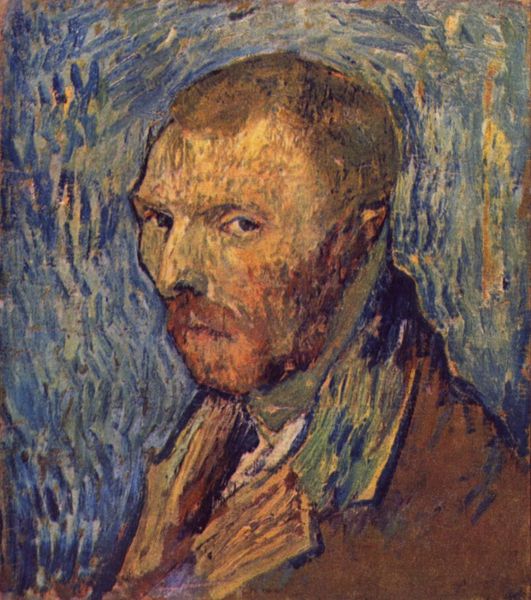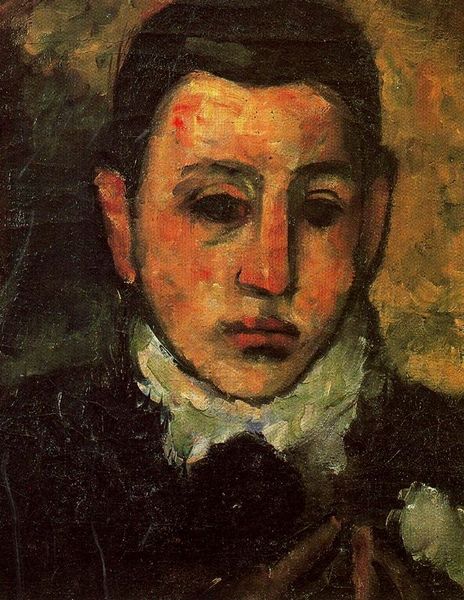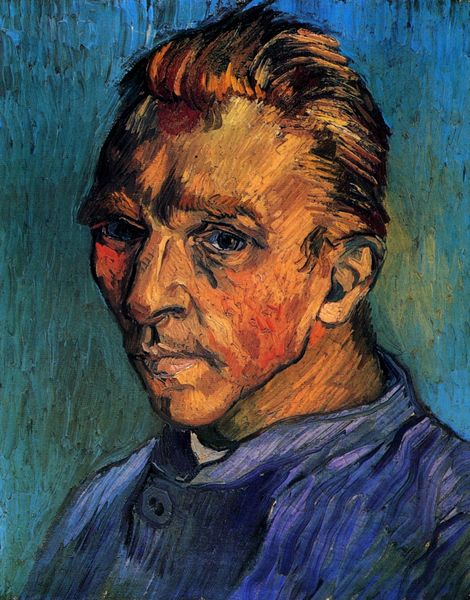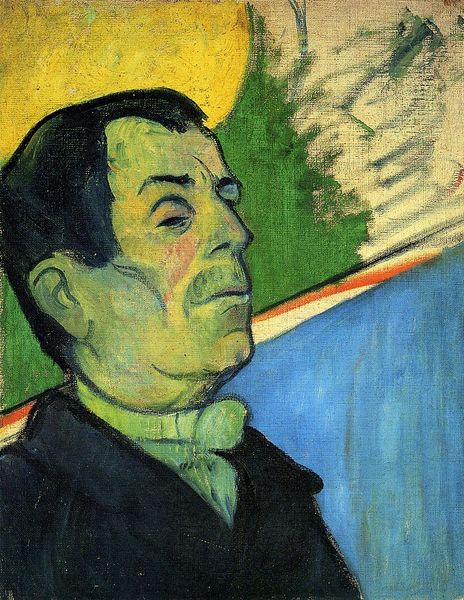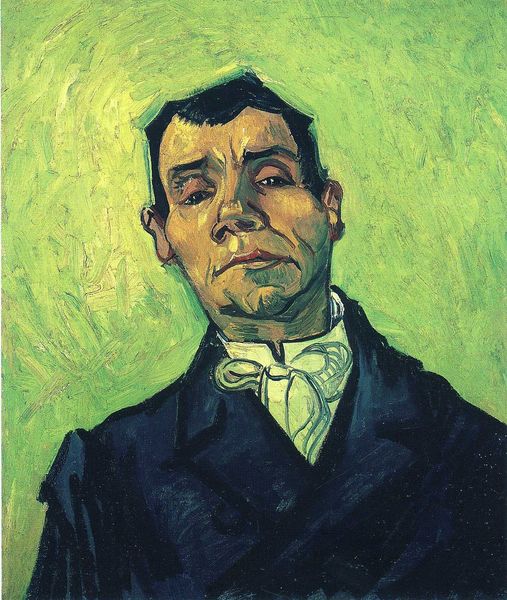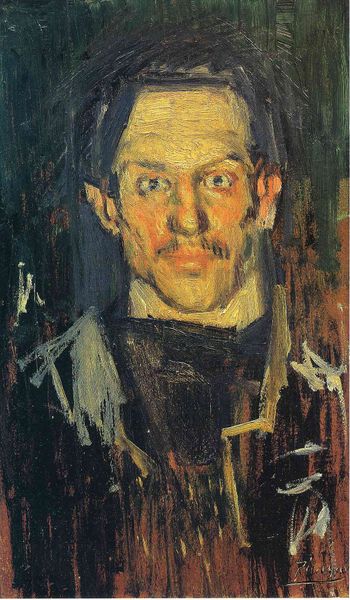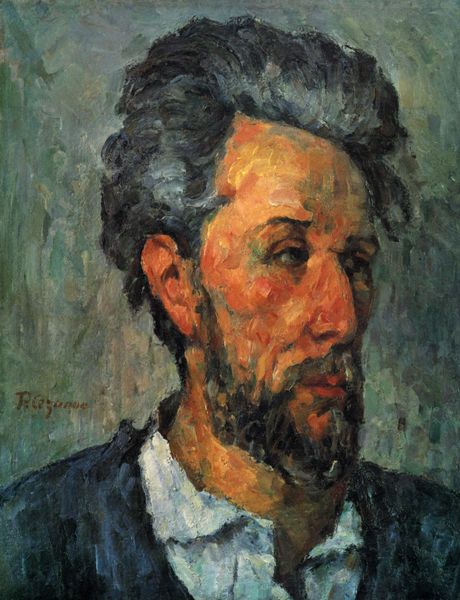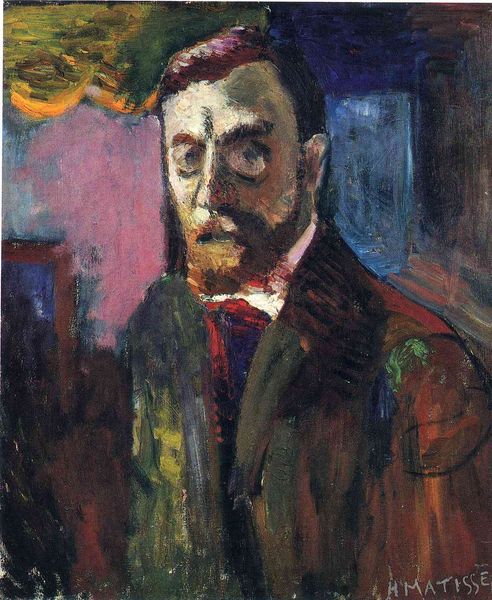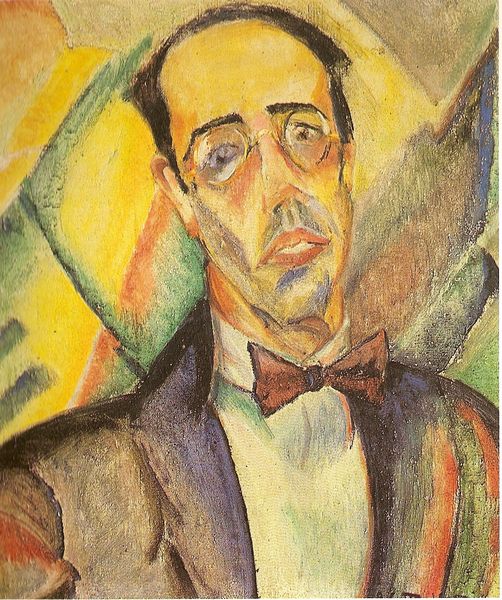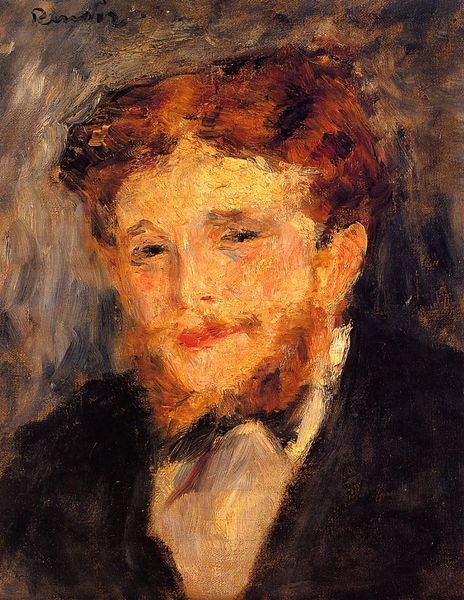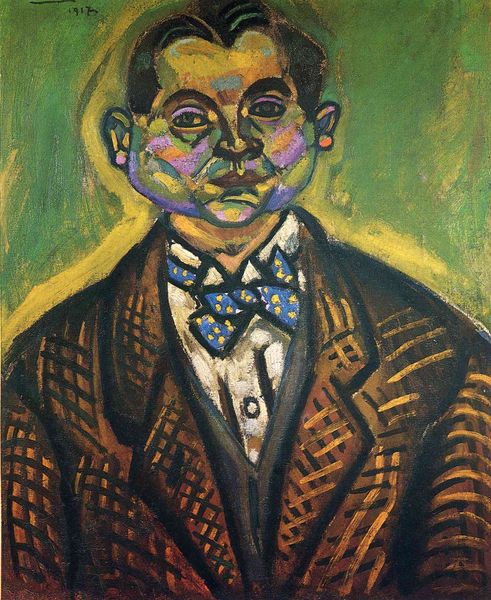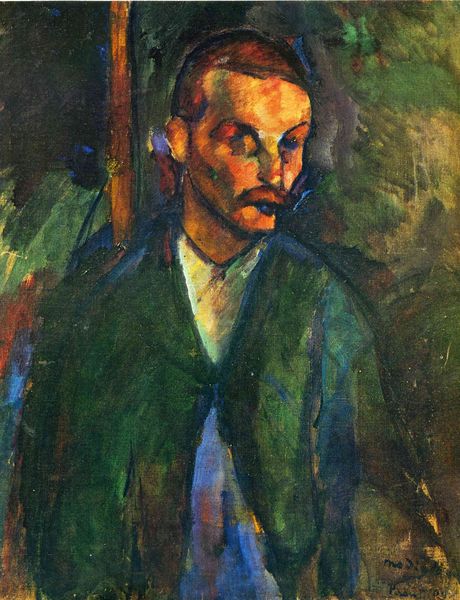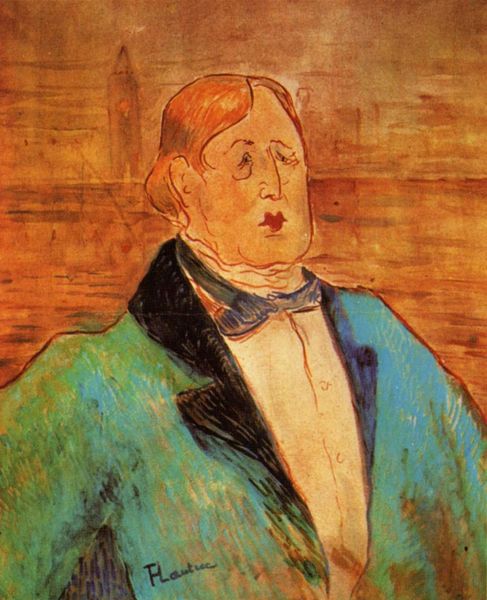
Copyright: Public domain
Curator: This is Kazimir Malevich's "Portrait of Ivan Kliun," painted in 1933, rendered in oil paint. Editor: There's a striking unease. The face is almost spectral, an unnatural palette, especially those unsettling pale blue eyes staring straight ahead. Curator: Absolutely. Note the thick impasto, almost crude application of paint, far from the refined portraiture one might expect. Consider the political climate of the time. Stalinist Russia demanded social realism. Yet, here's Malevich, a prominent figure in the Russian avant-garde, seemingly conforming to portraiture but undermining it at every turn. Editor: The subject's expression is unreadable, bordering on hostility, despite the conventional presentation in a suit and tie. It makes me think about how artists navigate oppressive regimes; can this opacity function as a quiet rebellion? Curator: It's plausible. The portrait subtly resists socialist realism’s demand for clarity and propagandistic imagery. Look closely at the background: the brushstrokes are agitated, a swirling mass. It's as if the subject and the background are dissolving into a turbulent vortex. The materiality itself communicates disruption. Editor: Perhaps Kliun, also an avant-garde artist and friend of Malevich, is complicit in this subversion. I see a dialogue between artist and sitter to question power and celebrate their own legacy as artists affiliated with now-forbidden aesthetic practices. Curator: I concur. There’s a coded language at play. The muted colors and the deliberate awkwardness are less a betrayal of avant-garde principles and more an adaptation, a means of survival in a landscape that no longer tolerated artistic innovation. The painting also speaks of a somber awareness of modernism's demise. Editor: This portrait makes me think about art's capacity to encode defiance. It transforms a conventional format into a subversive document of dissent. Curator: Precisely. A poignant reflection on friendship, artistic identity, and the constraints of ideology. Editor: Indeed, a fascinating intersection of the personal, the political, and the formal qualities of the artwork.
Comments
No comments
Be the first to comment and join the conversation on the ultimate creative platform.
